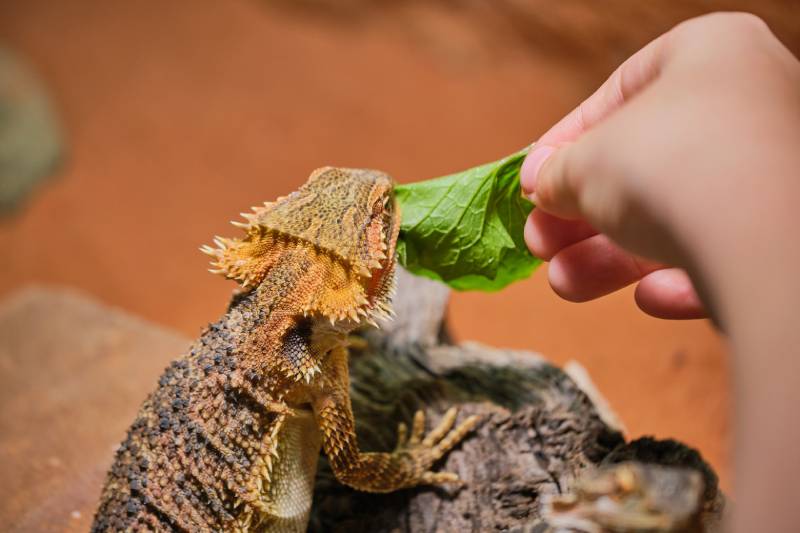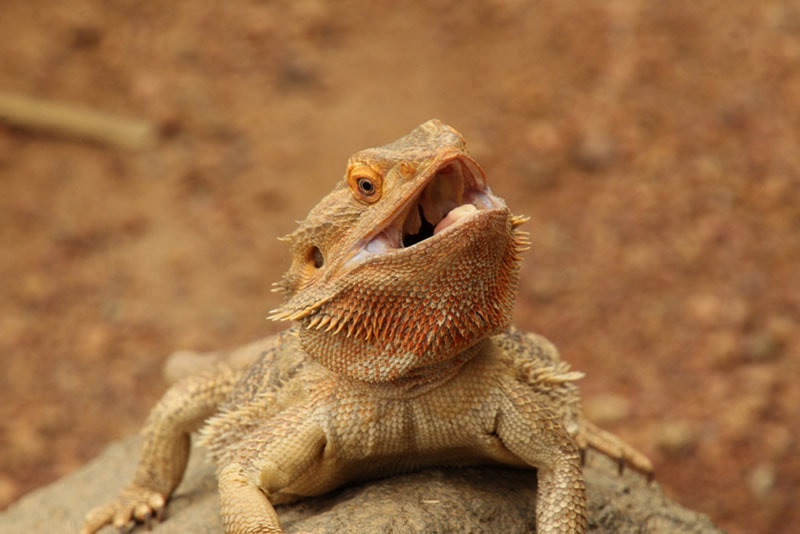Can Bearded Dragons Eat Darkling Beetles? Vet-Verified Diet Facts & FAQ

Updated on

Click to Skip Ahead
Bearded Dragons are omnivores that need a diet combining animal and plant matter. Typically, this means feeding live insects as well as fresh greens. Typical insects included in a diet are crickets, roaches, and some worms. Darkling beetles, although high in protein, are lacking in other nutrients, so while they are safe to feed bearded dragons, they should not be considered a staple feeder insect.
Most beardies dislike darkling beetles, especially because they have a hard exoskeleton that makes them difficult to digest. If your beardie enjoys them, still don’t feed them any more than once a fortnight or so.
Can Bearded Dragons Eat Darkling Beetles?
There are actually approximately 19,000 species of darkling beetles described worldwide. They all have a hard exoskeleton, and they have some unique defense mechanisms including the capability to spray an offensive-smelling liquid that is meant to deter predators. While the larva of the beetle is nutrient-rich and can be good food for insect-loving pets, the adults are not rich in nutrients, which makes them a poor choice of insect for bearded dragons.
Furthermore, many bearded dragons dislike the taste of this beetle, and the hard exoskeleton can make them difficult to digest. While the beetle is not considered toxic, it is best to avoid feeding them to bearded dragons.
Bearded Dragon Diet
Bearded dragons originate from the arid deserts and subtropical woodlands of Australia. They have evolved to survive in difficult conditions, existing on a diet that consists of insects, some small animals, and any fresh plants and greenery they can find. Their hydration requirements are met primarily through the plants and insects they eat, but also shallow pools of water.
In captivity, bearded dragons need a diet that closely mimics their wild diet, which means feeding live insects and offering fresh greens. A young beardie’s diet is made up of around 80% insects and 20% greens, but by the time they reach adulthood, between 50% and 80% of their diet will consist of greens.
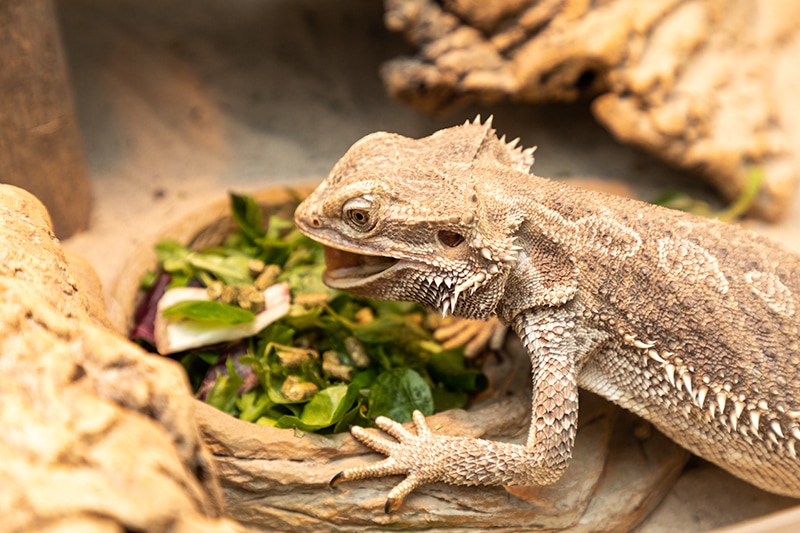
Insects
Bearded dragons need to be live-fed, which means that you will need to feed live roaches, crickets, and mealworms. These are typically gut-loaded before being fed, ensuring that their diet meets the bearded dragon’s nutritional requirements. Insects you can feed a bearded dragon include:
- Dubia Roaches
- Crickets
- Turkestan Cockroaches
- Mealworms
- Superworms
- Black Soldier Flies
Gut Loading Insects
Commercially bought insects, and those that are kept in tubs or other containers for days before being fed to bearded dragons, are lacking in essential nutrients that the beardie needs. They do not have access to UVB light and are fed a poor diet that is lacking in essential vitamins. Gut-loading the insects means feeding them nutrient-dense food before they are given to the bearded dragon. The nutrients are then passed on to the lizard when it consumes the insects.
Typically, gut-loading insects means feeding them food that is high in calcium and other vitamins.
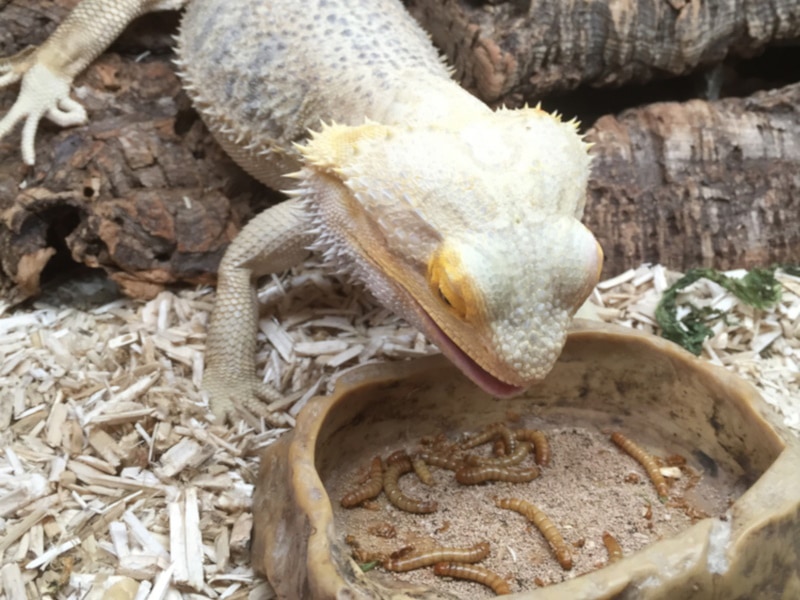
Greens
Greens are nutrient-dense vegetables that also contain water. Specifically, you should feed greens that are high in calcium and comparatively lower in phosphorus. The vegetables should be low in oxalates and goitrogens, too. It is essential to feed a varied selection of greens and other vegetables to rotate different ones in and out of daily feeding. This provides variety while also ensuring your beardie gets all the essential nutrients they require. Greens you can feed regularly include:
- Prickly Pear
- Collard Greens
- Dandelion Leaves
- Mustard Greens
Some vegetables are beneficial for bearded dragons but shouldn’t be fed as often. They can be too high in oxalates or may have too much phosphorus compared to calcium levels. These can be fed weekly, or fortnightly, and include:
- Bok Choy
- Cabbage
- Cilantro
- Kale
- Pea Sprouts
- Watercress
Supplements
As well as feeding insects and greens, it is common to give bearded dragons supplements. This usually involves giving a multivitamin as well as a calcium and vitamin D3 supplement. These supplements usually take the form of a powder that can be dusted on the Beardie’s food. Seek advice from your exotics vet to get the right supplement for your pet and always follow the instructions on the packaging to ensure that you are feeding an appropriate amount.
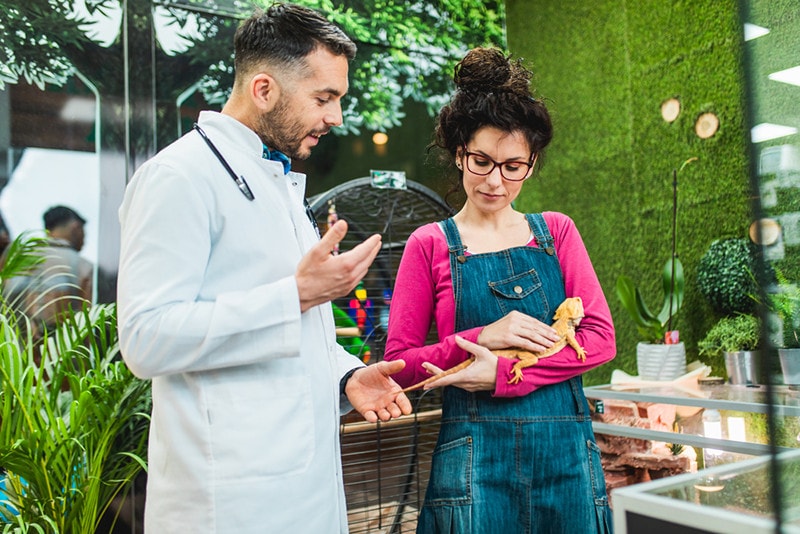
Water
All animals need water to survive. It keeps cells and organs healthy, and even though bearded dragons have adapted to live in deserts and other areas where water is scarce, they still need a regular water intake to stay alive. However, it can be difficult to get a bearded dragon to drink water from a water bowl, and because captive beardies eat less than those in the wild, dehydration can be a problem. Try feeding greens that are higher in moisture, spray food before feeding, and make sure there is a stocked water bowl available, even if you never see your bearded dragon drinking from it.
The 5 Tips for a Better Beardie Diet
1. Check Your Insect to Greens Ratio
Young, beardies need a ratio of around 80% insects to 20% greens. This ensures they have the protein to grow and get stronger. By the time your Beardie reaches adulthood, it should be consuming at least 50% vegetables and most adult Bearded Dragons have a diet consisting of more greens than insects.
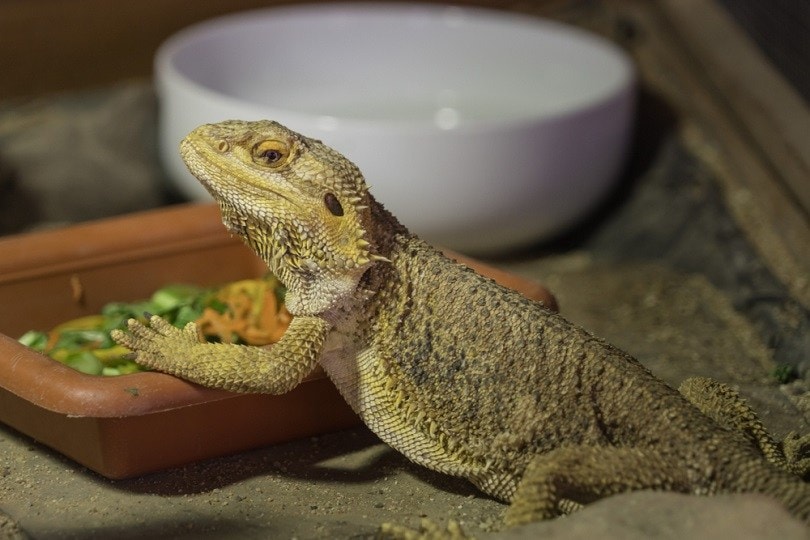
2. Check Your Calcium to Phosphorus Ratio
Bearded Dragons need calcium to support strong bones and skin. While phosphorus is also an important nutrient, and some phosphorus is considered essential to a beardie’s health, too much can be detrimental. Phosphorus effectively binds to calcium, which means that your beardie is unable to process that calcium. Therefore, a Beardie’s diet should contain more calcium than phosphorus, typically with a ratio of between 1.5 and 2 to 1, calcium to phosphorus.
3. Make Sure Insects Are Alive
If you don’t like the idea of feeding live insects to your pet, you should consider a different species. Beardies need their insects to be alive when fed. The movement of the cricket or worm catches the beardie’s attention and encourages it to hunt and consume the food. If the insect is dead, your bearded dragon will ignore it.
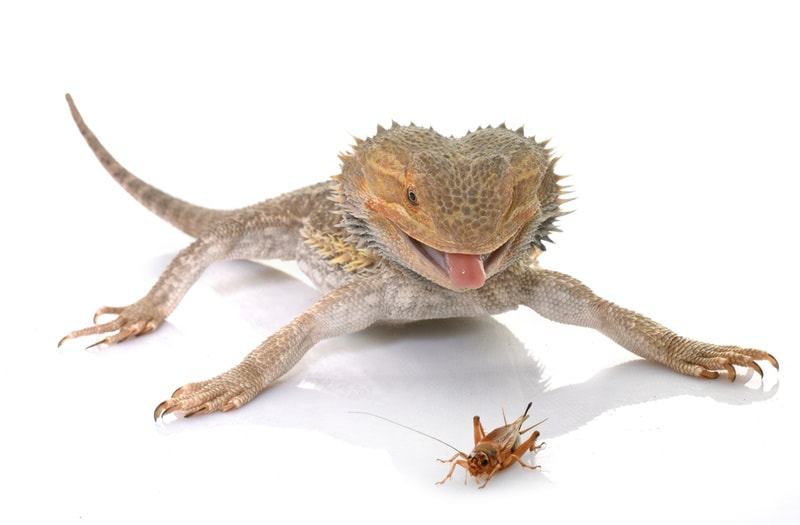
4. Gut Load Insects
Not only do the insects need to be alive, but they should be given a good nutrient-rich meal before they are given to the Bearded Dragon. This ensures that they have appropriate levels of calcium, vitamin D3, and other essential nutrients to pass on to the Beardie. Gut load insects approximately 1–2 days before feeding them to your Dragon.
5. Spray Food with Water
It can be difficult to convince a bearded dragon to drink water, especially straight from a bowl or fountain. One way to help ensure that your pet is still getting the water they need is to spray their food before giving it. This is especially beneficial with vegetables that are already damp, as spraying insects can cause them to become lethargic and stop moving, therefore decreasing your beardie’s interest in its live food.
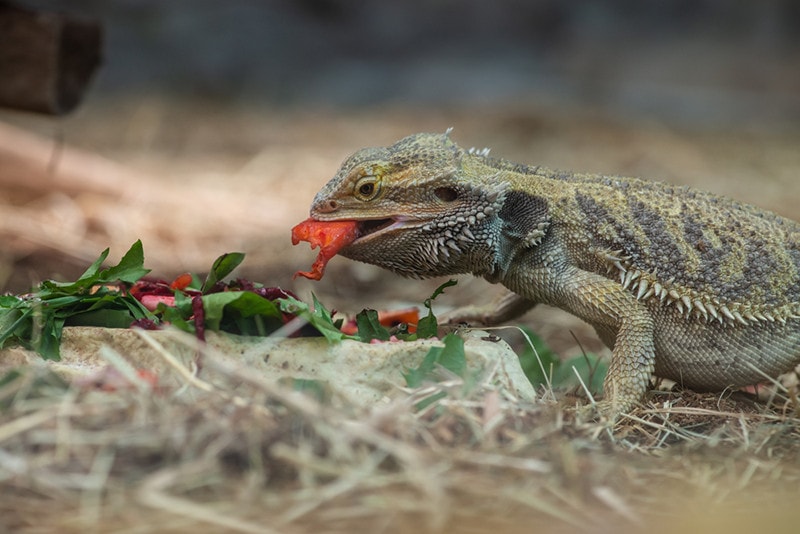
Frequent Asked Questions
Can Bearded Dragons Eat Dead Beetles?
Insects should be live when fed to bearded dragons. Many will ignore dead insects anyway, but even if they don’t, dead insects are likely to have much lower nutritional value than live ones, and unless you know why the beetle died, it could be a sign of illness. If the insect dies while in the enclosure, and your beardie chooses to eat it, it should be fine.
Does a Bearded Dragon Need to Eat Every Day?
How often a bearded dragon eats depends primarily on its age and appetite. Young beardies should eat two or even three times a day but while most adults will eat every day, this isn’t always the case. Avoid overfeeding by removing uneaten insects after around 10 minutes and leave vegetables in their enclosure for half an hour. This allows your dragon to determine how much they should eat but helps prevent overfeeding.
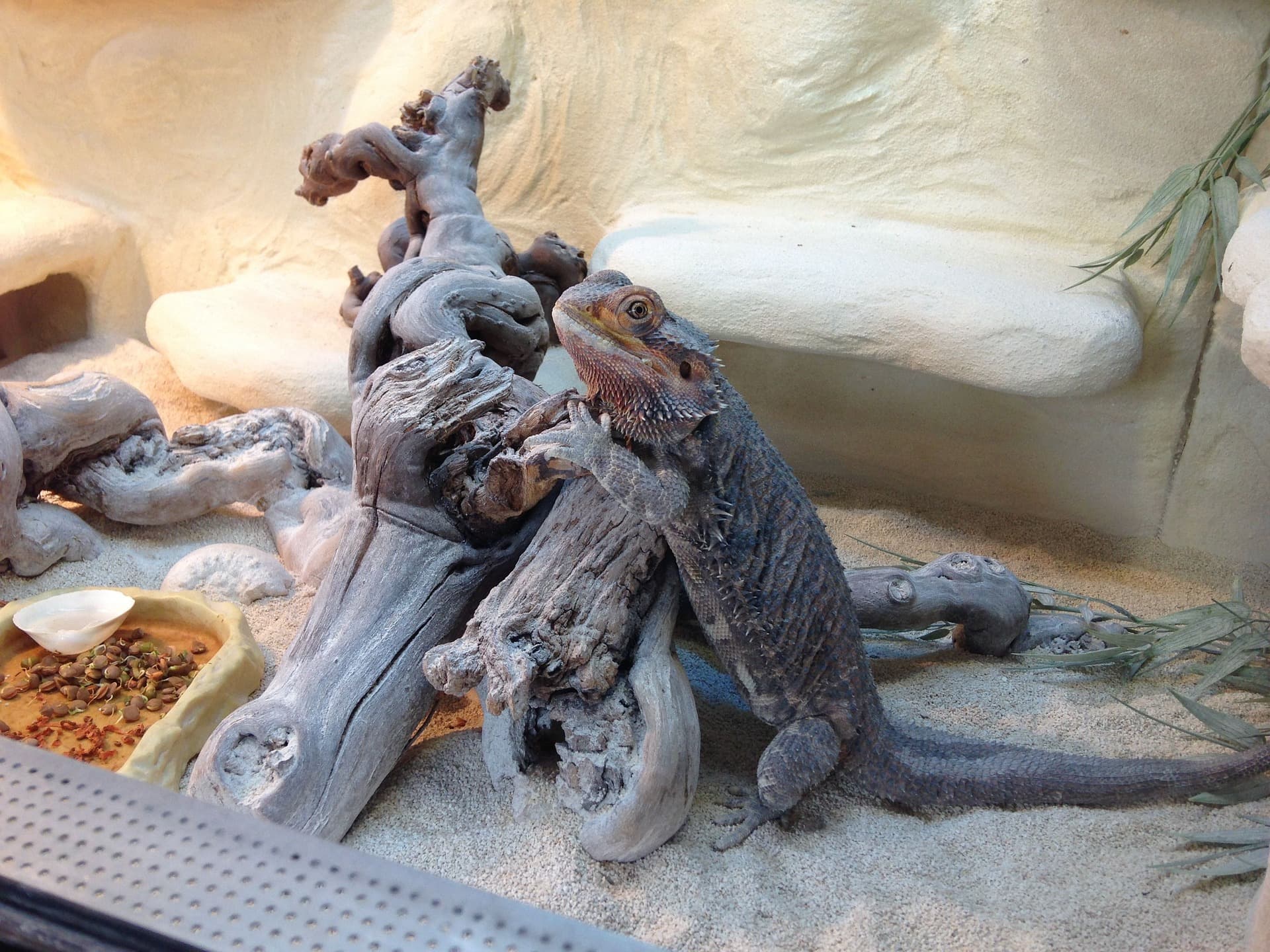
Conclusion
Bearded dragons make excellent reptilian pets, but it is very important to get their diet right. They need a varied and balanced diet consisting of both live insects and greens. Dubia roaches and crickets are the most common feeder insects, but there are other options. Darkling beetles are not considered a good food source because they are not rich in nutrients and most beardies do not like their flavor.
If you do feed darklings, you will need to ensure that they are gut-loaded before being fed because this ensures they offer the vitamins and minerals your beardie requires.
Featured Image Credit: vblinov, Shutterstock



